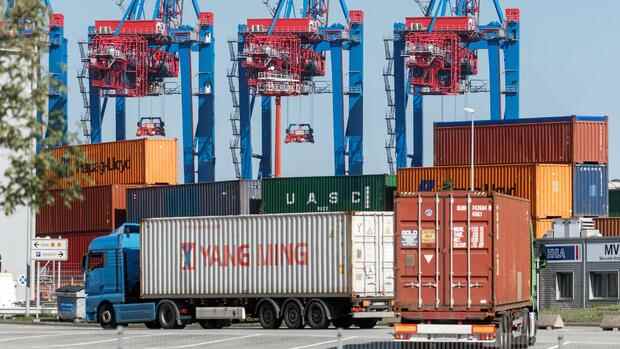Global supply chain issues are still affecting price developments.
(Photo: dpa)
Wiesbaden Selling prices in German wholesale rose a little faster again in January. They increased by an average of 16.2 percent compared to the same month last year, as the Federal Statistical Office announced on Friday.
That’s slightly more than December’s 16.1 percent, but less than November’s 16.6 percent, the highest since calculations began in 1962. The development is considered an indicator of future inflationary tendencies, as wholesalers represent the link between manufacturers and end customers.
Many raw materials and preliminary products also cost considerably more at the beginning of the year. In the wholesale of mineral oil products, for example, there was an increase of 41.9 percent compared to January 2021. Significant surcharges were also reported for ores, metals and semi-finished metal products (+50.2 percent) as well as used material and residues (+47.8 percent).
The wholesale prices for raw and sawn timber (+39.8 percent), chemical products (+34.4 percent), grain, raw tobacco, seeds and animal feed (+29.3 percent) and metal were also significantly higher – and plastic goods for building purposes (+23.8 percent).
Top jobs of the day
Find the best jobs now and
be notified by email.
Due to the recovery of the global economy from the Corona recession, the prices for many products rose rapidly last year. This leads to global bottlenecks, which lead to further increases in prices.
In addition, there are disrupted supply chains, for example due to corona outbreaks in China, where the authorities have closed entire factories and ports because of a single case discovered. The People’s Republic has been Germany’s most important trading partner for years.
>> Read here: China’s rigid corona policy endangers world trade
The wholesale association BGA expects slower growth this year, also because of the supply chain problems expected until mid-2022. Sales are expected to increase by 5.5 percent to EUR 1.545 trillion. Price-adjusted, a real plus of up to three percent should remain. The number of employees in the industry could exceed the two million mark for the first time in 2022.
More: Limits of Globalization: The Supply Chain Odyssey of an LED TV
